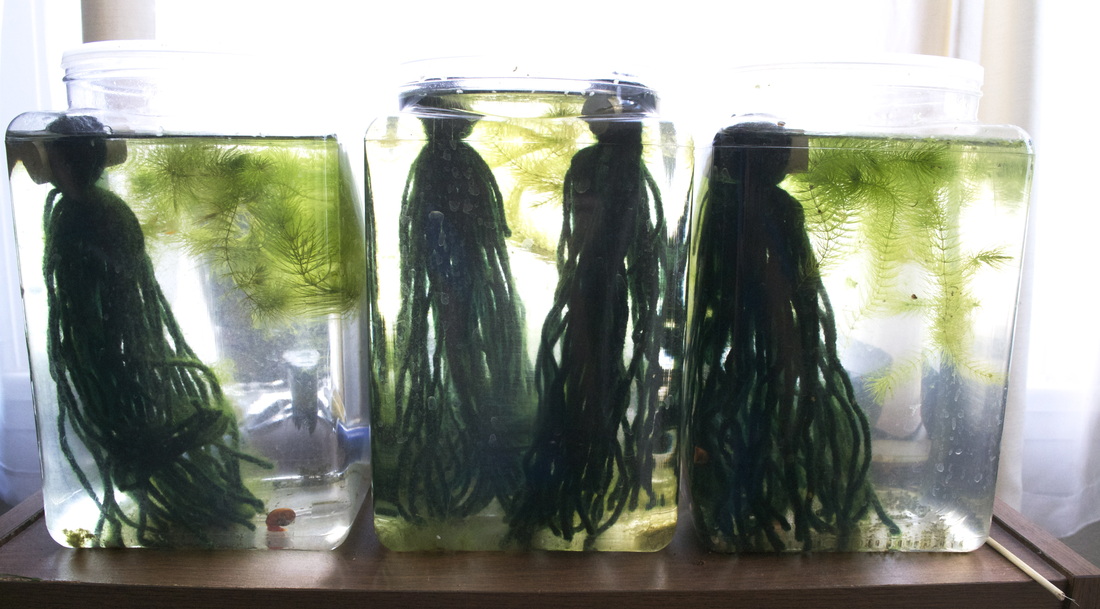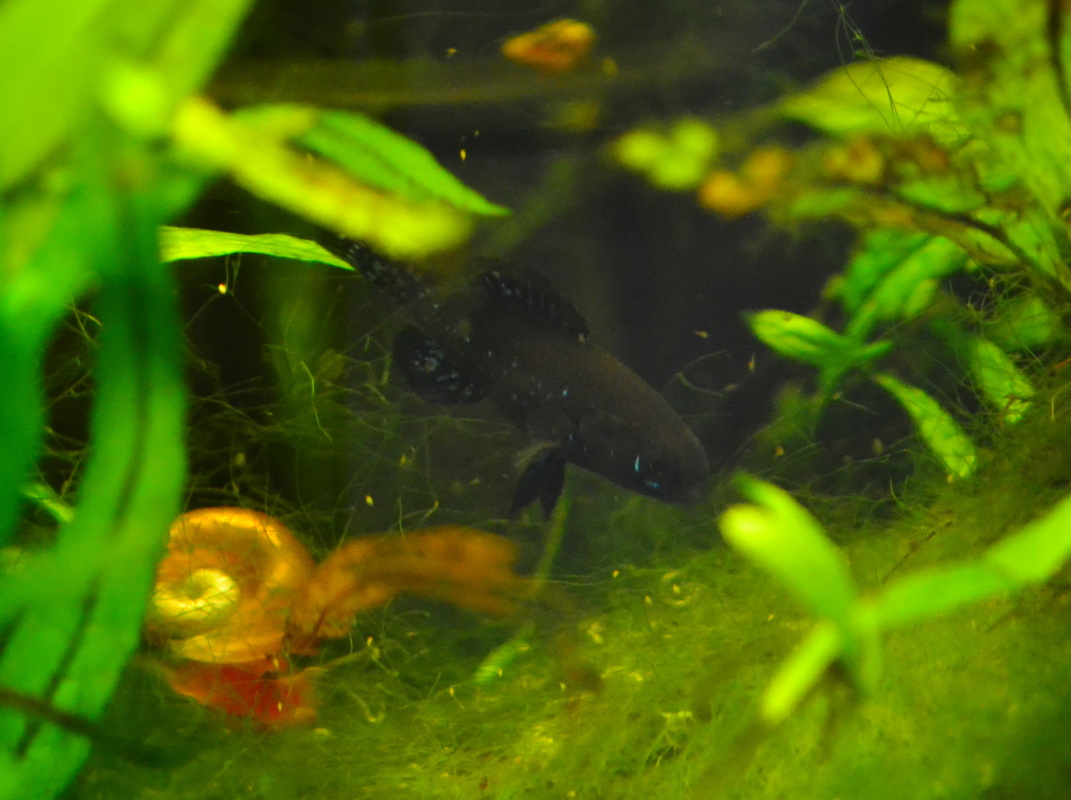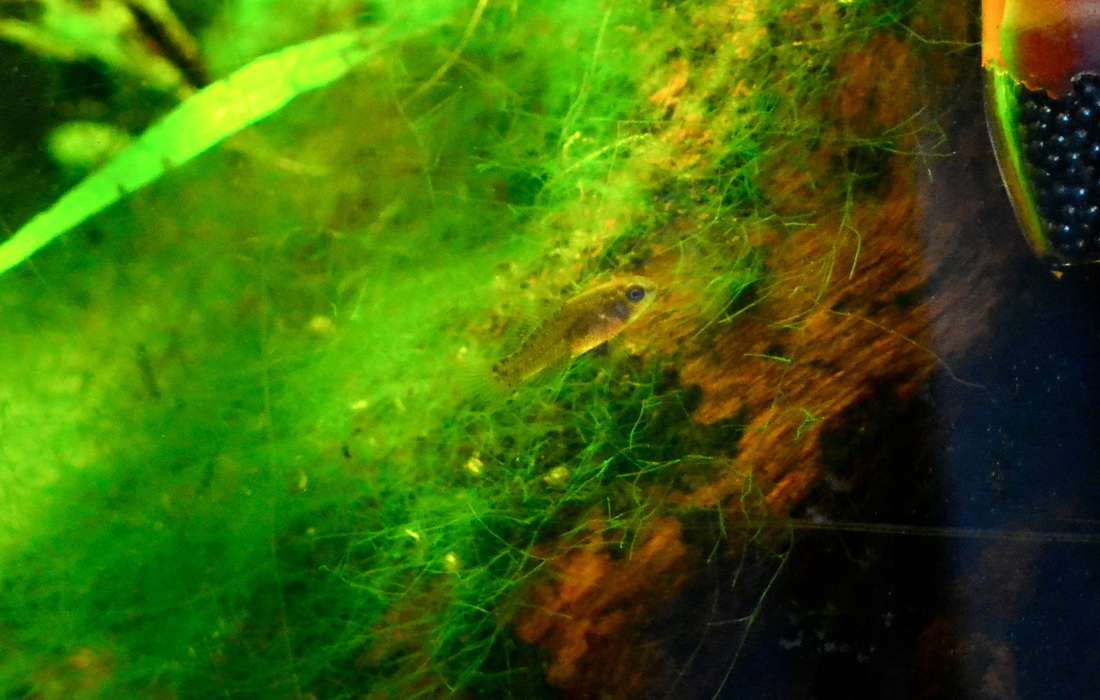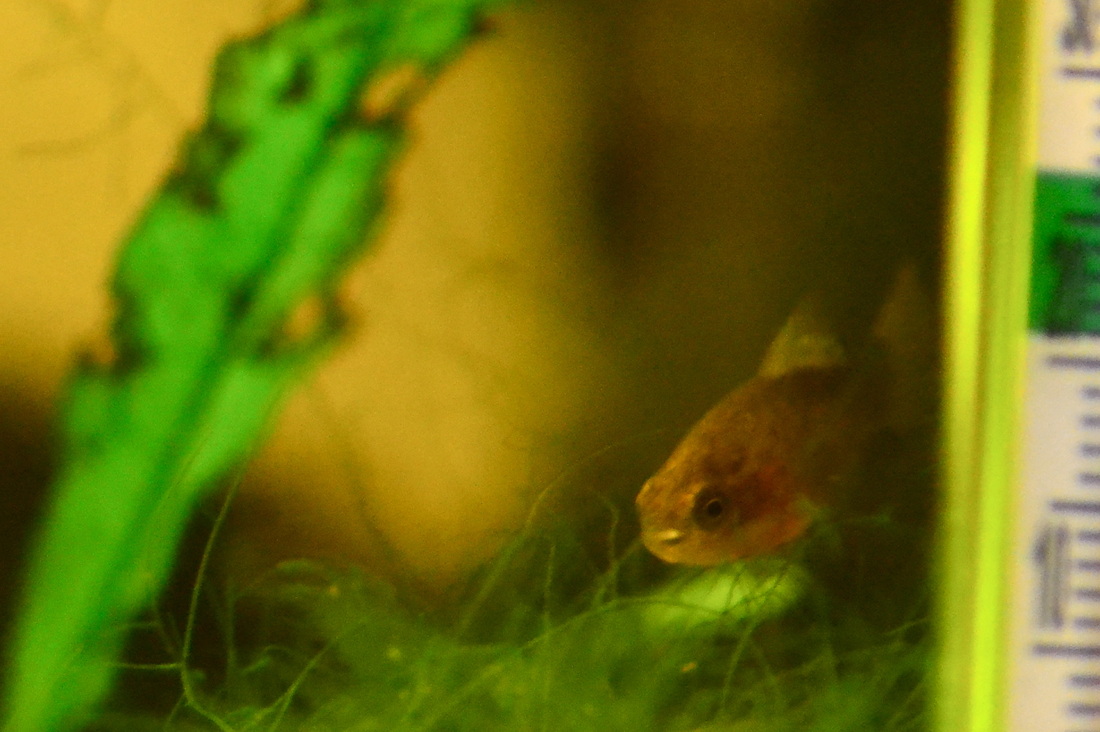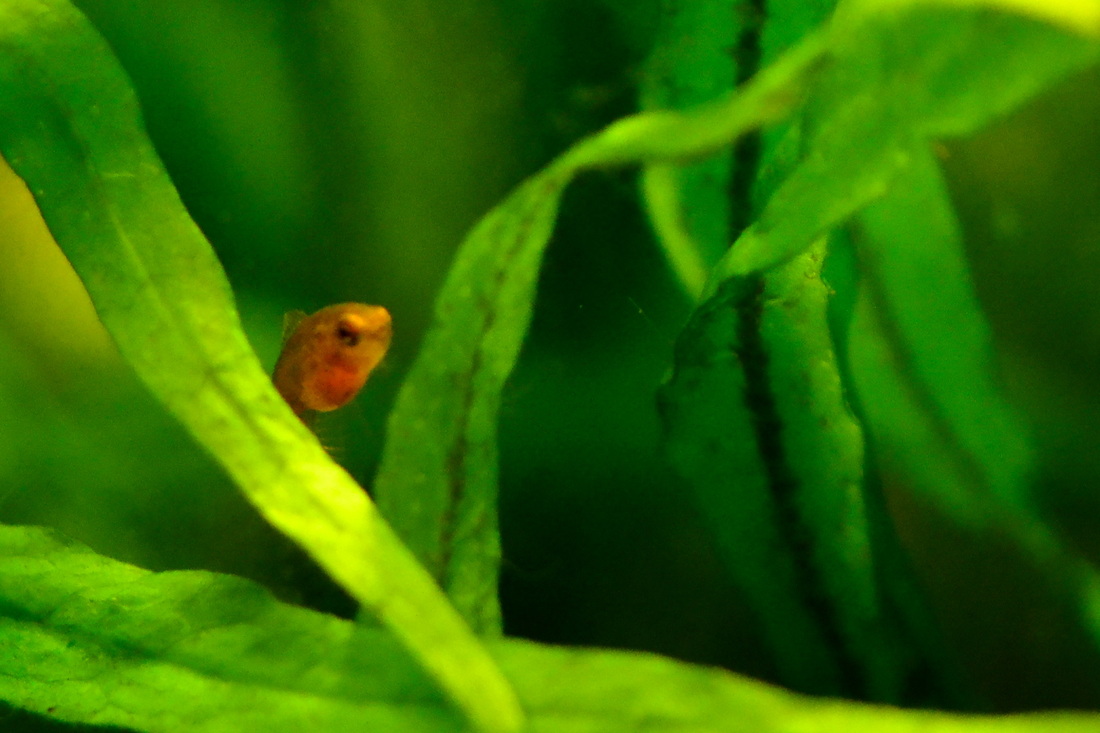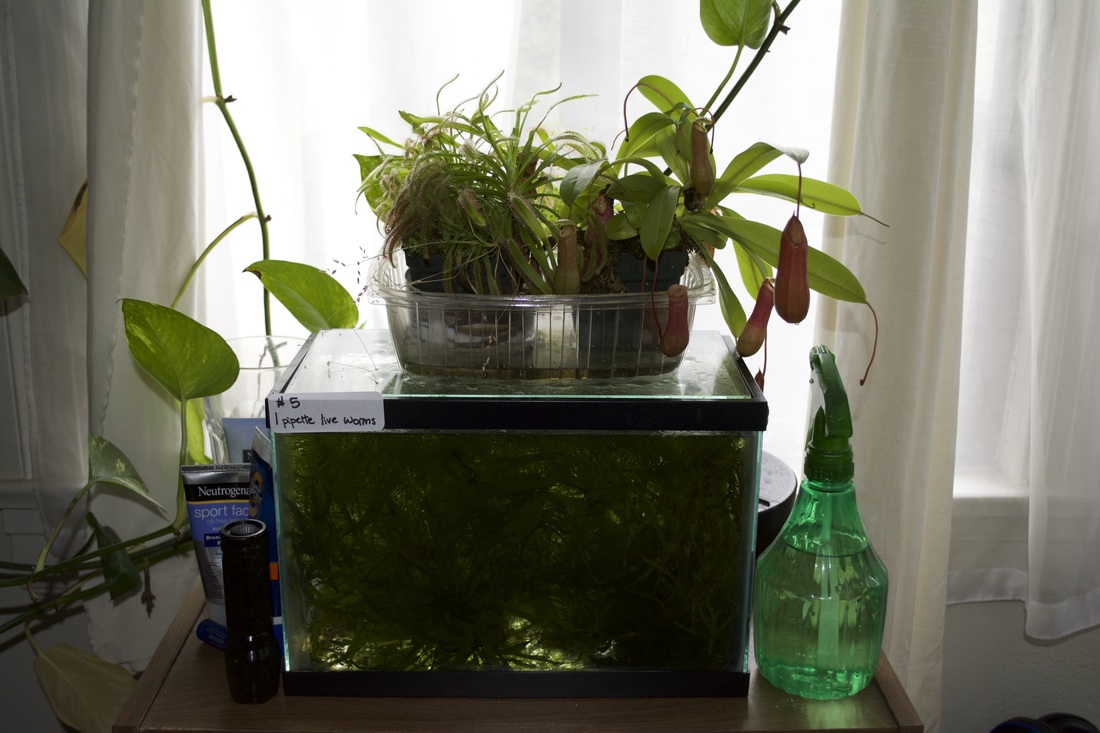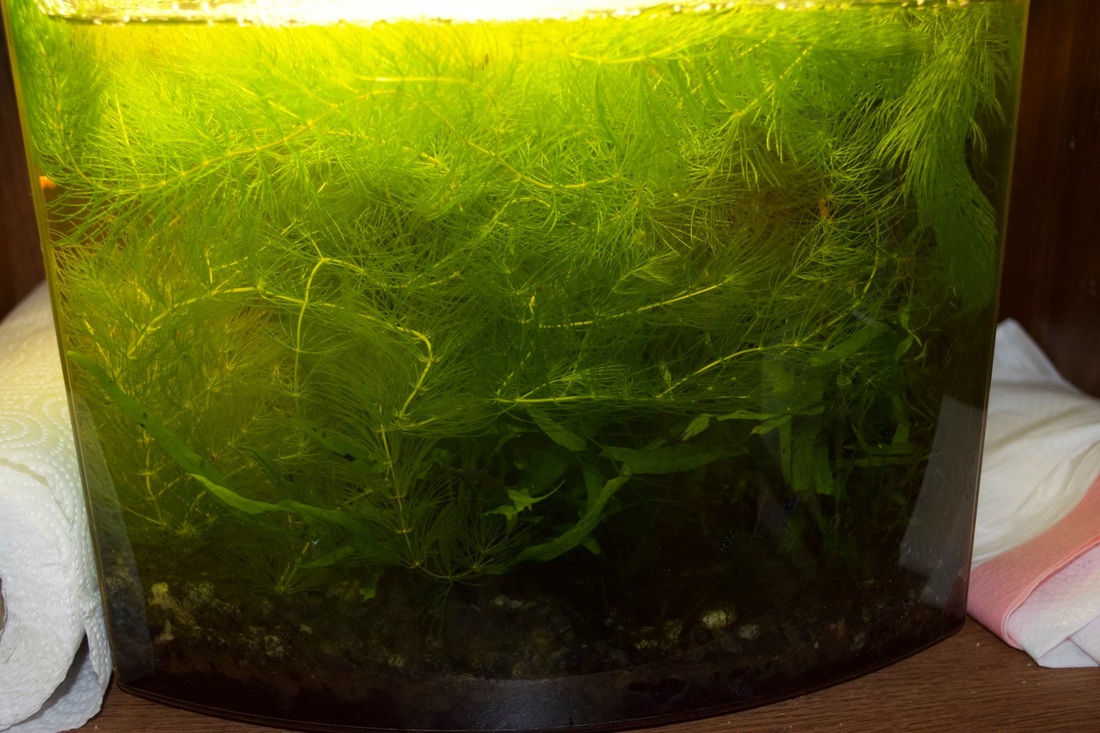Elassoma species affinis evergladei Three Mile Creek, Elberta, Alabama
|
I am in love with this species (Still not formally published yet, but it is in the works!). I obtained it from John Boylan, who knew the scientist that is currently describing this new species. It is slightly different from Elassoma evergladei. Hopefully it will be published soon and I can stop writing these ridiculously long names! They were collected at Three Mile Creek in Elberta, Alabama. I received my original wild pair in 2012.
A really fantastic and heavily cited resource for caring for pygmy sunfish is an extensive account written by NANFA member Erica Lyons. It can be found here. |
I housed my pair in a 2.5 gallon tank, with lots of needle leaf java fern attached to a big piece of drift wood. There is a small sponge filter and heater that keeps the temperature at a steady 74F. I feed the adults grindal worms and also have small snails in there (John told me that adults will occasionally eat small snails out of their shell!).
To my dismay, my female died after only a couple of months. Although the male displayed rigorously during that time, I never saw any actual spawning behavior, so I wasn't sure if there would be any fry. To my surprise and delight, more and more fry started to appear. To this day, I have never seen them in the act of spawning...but little fry always mysteriously come out of the ether :) They are really wonderful little sunfish (max size less than an inch!) and I hope that more people maintain them. They are a little shy to start out, but once they recognize you as the food bringer, you can observe some very interesting behavior. Observing the courtship of these guys is fascinating, with all of their fins wiggling wildly around. I find that if I slowly come up to the tank right after I put some grindals in, the little sunfish come running. The ensuing displays are quite fun to watch :) Moving too fast to observe the fish ends up in a seemingly empty tank - they will tolerate your presence, but be sure to stay still and patient! |
Spawning Technique
|
I have worked out a nice little system for spawning these fish. The 2.5 gallon above is now the main tank, where I keep juveniles/adults and observe their funny behavior. From this tank, I remove a likely pair and place them into a little 1 gallon near the window, at room temperature, with spawning mops and lots of hornwort. Since the jars get quite a bit of sunlight, they usually turn into varying shades of greenwater after a while! I think this is KEY to allowing the young fry to survive though. I average about 10-20 fry of various sizes per jar. As far as I know, there is no egg-eating by the parents - the only danger are the other juveniles in the tank. More fry will continue to pop up after the breeding pair are removed, so I think incubation period is quite long. You might not see fry after introduction of the mating pair for several weeks , but as long as there is a lot of dancing display and the female becomes enormously gravid, I wouldn't worry.
|
I then raise the fry normally with BBS and walter/banana/micro worms until they are large enough to release into the main tank. I feed the young adults and adults grindal worms and white worms. I usually try to give away or sell the "proven" pairs after they spawn, since determining the sex of subordinate males can sometimes be difficult.
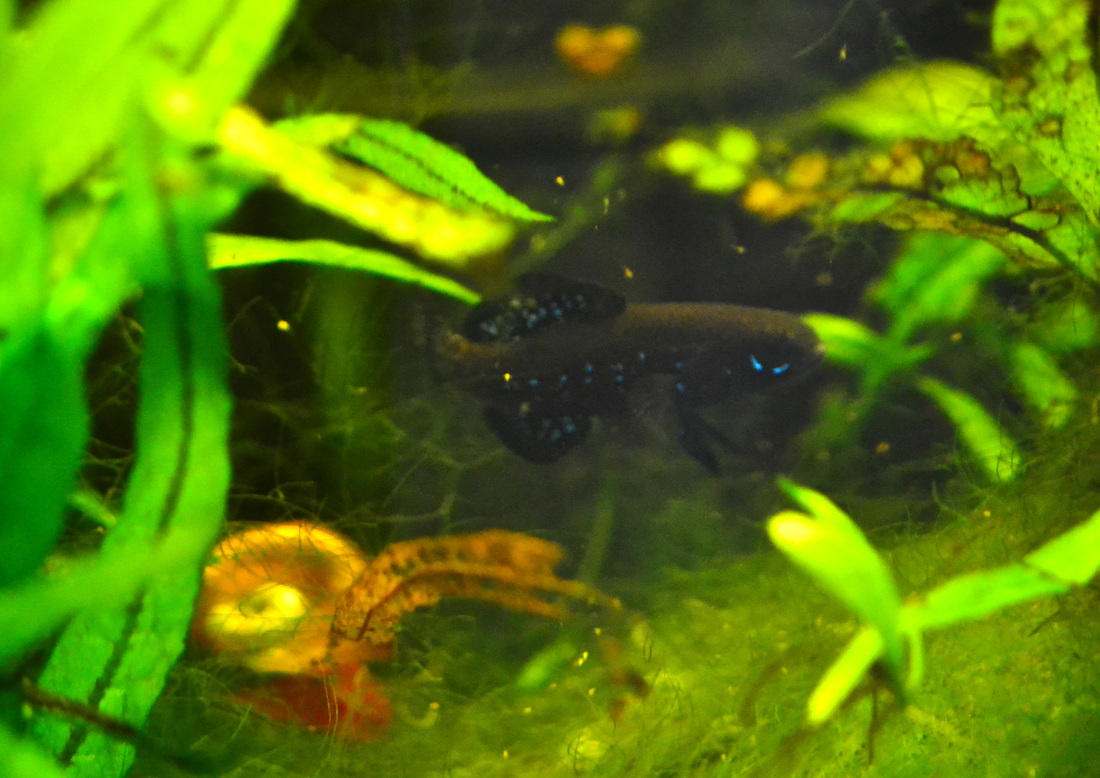
Adult male playing around with his food lol. Alpha males color up beautifully and claim small territories, usually around some prominent tank feature (a big clump of java, a slight depression in the gravel, the sponge filter are a few favorites). Male can be aggressive in their displays and chasing females, but there is rarely actual damage.
New community tank!
|
I decided to try a small 2.5 gallon community tank with H. formosa. Neither of these species eat their own fry. The friendly H. formosa encourage the usually reserved Elassoma to come into the open more. However, it is clear that the Elassoma are eating the H. formosa fry, and the reverse may be true as well.
This has been a very fun tank to watch! I highly encourage obtaining both of these little species if you can! No aeration or heat required (at least here in San Francisco). These are definitely my easiest species. |
|
The spawning tank containing only a trio of breeding adults does really well. You can see that I am serious when I say that you should STUFF the tank with plants! I am convinced that tons of fine-leaved plants are key to the success of spawning this species.
There is an adult male hiding in plain sight in this photo. Bonus points if you can find him ;) Remember that this species is particularly beautiful in that it is almost all completely, velvety black with only a few bright blue iridescent spots! |

